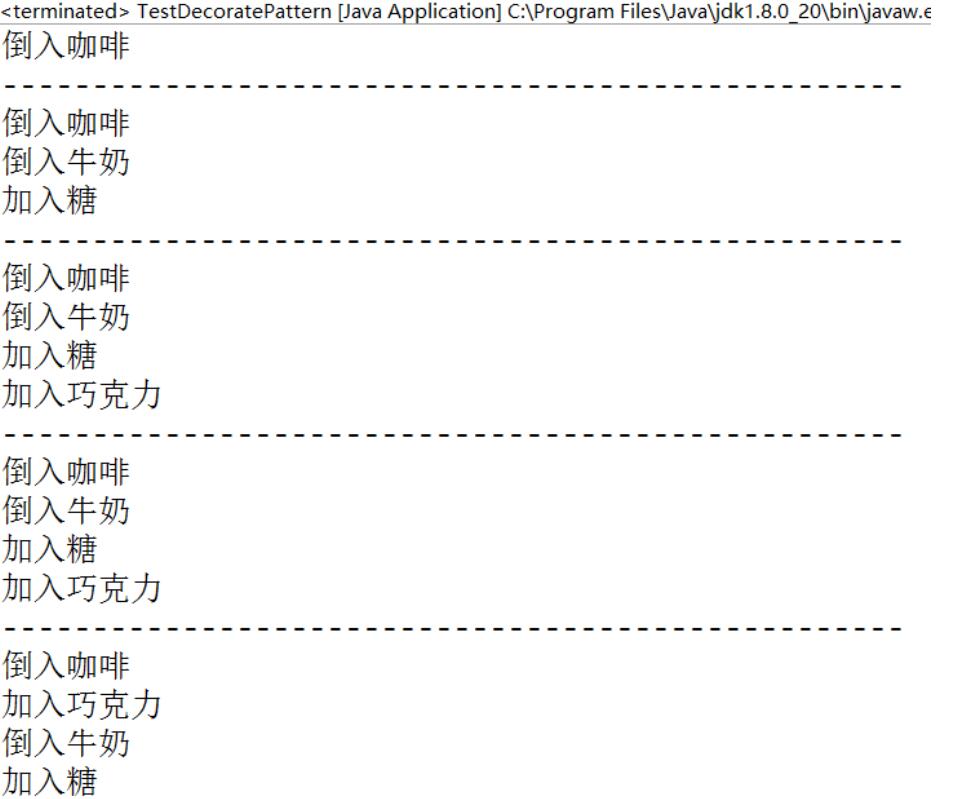Home >Java >javaTutorial >A preliminary study on Java decorator design patterns
A preliminary study on Java decorator design patterns
- 高洛峰Original
- 2017-01-19 16:09:301278browse
This essay mainly introduces the implementation of simple decorator design pattern in Java:
Let’s first take a look at the class diagram of the decorator design pattern:

As you can see from the picture, we can decorate any implementation class of the Component interface, and these implementation classes also include the decorator itself, and the decorator itself can also be decorated again.
The following is a simple decorator design pattern implemented in Java. It provides a decorator system that starts with the basic addition of coffee and can continue to add milk, chocolate, and sugar.
interface Component {
void method();
}
class Coffee implements Component {
@Override
public void method() {
// TODO Auto-generated method stub
System.out.println("倒入咖啡");
}
}
class Decorator implements Component {
public Component comp;
public Decorator(Component comp) {
this.comp = comp;
}
@Override
public void method() {
// TODO Auto-generated method stub
comp.method();
}
}
class ConcreteDecorateA extends Decorator {
public Component comp;
public ConcreteDecorateA(Component comp) {
super(comp);
this.comp = comp;
}
public void method1() {
System.out.println("倒入牛奶");
}
public void method2() {
System.out.println("加入糖 ");
}
public void method() {
super.method();
method1();
method2();
}
}
class ConcreteDecorateB extends Decorator {
public Component comp;
public ConcreteDecorateB(Component comp) {
super(comp);
this.comp = comp;
}
public void method1() {
System.out.println("加入巧克力");
}
public void method() {
super.method();
method1();
}
}
public class TestDecoratePattern {
public static void main(String[] args) {
Component comp = new Coffee();
comp.method();
System.out.println("--------------------------------------------------");
Component comp1 = new ConcreteDecorateA(comp);
comp1.method();
System.out.println("--------------------------------------------------");
Component comp2 = new ConcreteDecorateB(comp1);
comp2.method();
System.out.println("--------------------------------------------------");
Component comp3 = new ConcreteDecorateB(new ConcreteDecorateA(new Coffee()));
comp3.method();
System.out.println("--------------------------------------------------");
Component comp4 = new ConcreteDecorateA(new ConcreteDecorateB(new Coffee()));
comp4.method();
}
}Run results:

The above is the entire content of this article. I hope it will be helpful to everyone's learning, and I also hope that everyone will support the PHP Chinese website.
For more articles related to the preliminary exploration of Java decorator design patterns, please pay attention to the PHP Chinese website!

